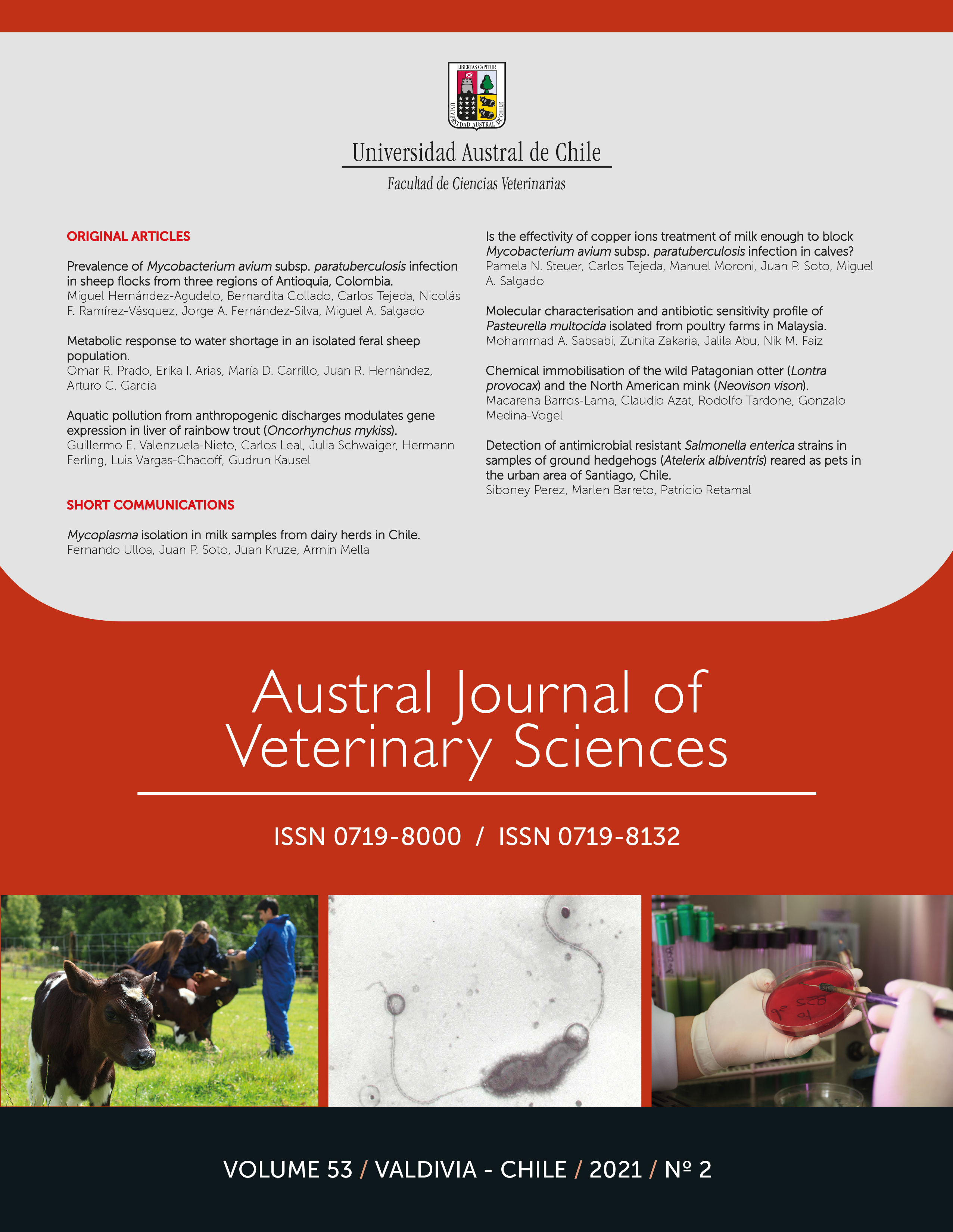Metabolic response to water shortage in an isolated feral sheep population
Contenido principal del artículo
Resumen
To establish metabolic responses for biochemical analytes related to freshwater shortage adaptation, a total of 376 blood samples were collected from feral sheep at the Socorro Island, Revillagigedo Archipelago. Comparisons were made between four sampling periods with repeated measurements at 0, 7, 14, and 21 d (94 blood serums: 84 females and 10 males). During the first week, the sheep received daily water ad libitum. During the second and third week, the sheep received 60% daily water in relation to the first 7 days intake. Analysis of variance was used to compare the mean values between sampling days. Stepwise regression analysis was used to evaluate the relationships between the biochemical analytes. The glucose (GLU), total cholesterol (COL-T), triglycerides (TAG), urea, albumin (ALB), total protein (PROT-T), sodium ion (Na+), creatine kinase (CK), arginine vasopressin (AVP), and aldosterone (Aldo), were determined. With the exception of GLU, the COL-T, TAG, urea, ALB, PROT-T, Na+, CK, AVP, and Aldo showed differences between sampling days with the higher values corresponding to 14 d with limited water intake. Negative correlations (P<0.05) between ALB with COL-T and TAG, were quantified. Positive correlations (P<0.05) between COL-T with TAG, and Aldo; between urea with PROT-T, between CK with ALB and PROT-T, between AVP with COL-T, TAG, urea, PROT-T and Aldo, and between Aldo with Na+, were quantified. Results could help improve the accuracy of metabolic profiles used as a tool for evaluating dehydration indicators and to describe the physiological mechanisms employed by feral sheep to cope with limited availability of freshwater.

